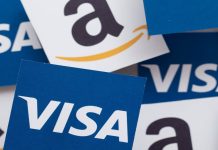LoopMe’s latest survey shows Amazon Prime’s value perception has halved since ads were introduced, with younger demographics driving cancellations and shifting preferences.
LoopMe, a leading technology company that uses artificial intelligence (AI) to improve brand advertising performance, today revealed that consumer perception of Amazon Prime’s value for money has dropped by nearly half (47%) since Prime Video introduced ads in February 2024. While 2024, a similar LoopMe survey found that most people (85%) viewed it as offering value before introducing ads, the latest research shows this has fallen to 38% in 2025.
The new survey also shows a rise in people’s unwillingness to pay to opt out of receiving ads. This is particularly apparent among 25-34-year-olds. In 2024, 12% stated they were happy to pay—the highest for any age demographic—but this has now fallen by almost half to just 7%.
What’s more, it has prompted younger consumers to act. A quarter (25%) of 25-34-year-olds surveyed said they had canceled their Prime membership because of the introduction of advertising. This is markedly different from older demographics, with just 15% of 55-64-year-olds taking action for the same reason. Overall, 21% of all respondents said that they didn’t mind the ads, and 41% said that the introduction of ads hasn’t changed how they feel about Amazon Prime, indicating to advertisers the opportunity to reach engaged audiences while carefully considering different demographic preferences.
When it comes to watching programs on streaming services—including Prime Video—the research highlights that the big screen wins out. TV, at 45%, was the number one viewing device, which is perhaps not surprising given that many smart TVs come with pre-installed streaming service apps, making them easy to access. However, age is also a key factor in determining device preference.
Also Read: AI’s Rise: Fueled by Advertising Dollars
While the majority (61%) of 45-54-year-olds prefer to cozy up in front of the TV to enjoy streaming services, just 28% of the 18-24 group opt for this. Instead, they have the highest preference of any age group for accessing streaming content via apps on their phone or tablets (15%). With in-app being a future driver of brand advertising, and with viewing data highlighting 88% of individuals aged 13-24 use smartphones for video viewing weekly, surpassing the 72% who use smart TVs, this provides an opportunity for advertisers to reach these lucrative younger age groups whose spending power will only increase.
“Undoubtedly, Amazon is driving revenue from introducing its ad-supported tier alongside its paid-for opt-out proposition, but this appears to be at the expense of eroding its differentiation from its competitors,” says Sarah Tims, AVP Marketing at LoopMe. “While Prime’s bundled offering of services provides consumers with more reasons to sign up, the value for money people associated with it has significantly declined. This could have implications for future subscriber numbers, especially as the younger demographics appear less accepting of the current situation.”
Also Read: Lyft, Uber, and the Tech Industry’s Growing Ad-Creep Trend
Methodology
LoopMe surveyed a combined total of 4,599 UK and US consumers between 26 January – 2 February 2024 to assess attitudes toward Amazon Prime Video’s introduction of advertising.
LoopMe surveyed a combined total of 19,753 UK and US consumers from 23 to 31 January 2025 to understand updated attitudes towards Amazon’s introduction of advertising to Prime Video and a paid-for opt-out tier. The company also analyzed platform preferences regarding streaming service content.
LoopMe’s opt-in GDPR-compliant research was delivered to consumers via their mobile devices. All surveys were non-incentivized.
Surveys appear as consumers engage with content across mobile web and apps, providing scalability and unique reach for data collection.
PurchaseLoop Audiences leverages LoopMe’s survey technology to create exclusive audiences and identify in-market consumers. PurchaseLoop Audiences are created from proprietary segments using live, opt-in, marketplace responses and modeled to scale by our industry-leading artificial intelligence.










